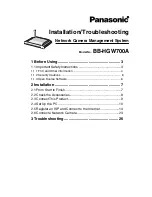
ITABAR-Sensor Type
IBFD
Operating
Manual
almost identical to the type IBFD-65. The only
difference is the end support (with a weldolet for
type IBFD-66 ; see Fig. 15), which permits higher
stream velocities in the pipe.
Except for the installation of the sensor end support,
the installation steps are identical to those for type
IBFD-65.
Installation of the closed sensor end support:
1. Install the mounting flange as already described
under chapter 5.6. points 1 to 6.
2. Take a cord and tie one end around the existing
weld stud. Wrap the other end of the cord around
the pipe so that it forms a loop around the pipe.
Mark the half-way point of the pipe
circumference on the pipe.
3. Now drill a second hole of 60 mm diameter into
the pipe.
4. Insert the ITABAR sensor through the mounting
flange and check correct alignment. Put the
weldolet (item A, fig. 15) on the pipe.
Fig. 15
5. Tack the weldolet (item A) with 4mm clearance
onto the pipe.
6. Remove the sensor.
7. Finish welding of weldolet (item A).
8. Insert the ITABAR sensor through the mounting
flange and install the ring (item B, fig. 15). If it´s
not possible, because the tolerance of welding
are to much, so you are able to machine the ring
(clearence into the weldolet -0,2mm).
9. Now you can weld the endcap (item C, fig. 15)
onto the weldolet (item A).
6. Insulation
It is important for proper operation of the ITABAR
steam sensor that the phase change from vapour to
liquid take place only in the therefore specially
designed condensation vessels and not in the head
of the sensor.
Therefore, the entire sensor head and all other parts
up to the condensation vessels must be insulated
with a suitable material.
Before being insulated, all piping connections
should be checked for leaks and the instrument
connection for the differential pressure have to be
marked ( + and - ) to prevent confusion.
Finally, the ITABAR TAG-plate must hang outside
the insulation for later identification of the flow
station.
ATTENTION!
Do not insulate the condensation vessels, valves and
the lines to the differential pressure transmitter!
The media there have to be in liquid state.
7.
Installation of valve block and
the
p-transmitter
7.1. Valve
block
For steam measurement a 3-valve instrument
manifold is recommended. The valves of a 3-valve
manifold has the following functions:
• Valve C and D shut-off to transmitter,
• Valve E Bypass valve (transmitter zero),
If a 5-valve instrument manifold will be used the
valve has additional function:
• valve F and G for drains
See Fig. 13a and b
7.2.
∆
p-Transmitter
For steam measurements, the differential pressure
transmitter should always be installed below the
ITABAR sensor in order to avoid the occurrence of
air bubbles in the instrument connections (see
Fig.
13a and b). Take care to mount the dp-
transmitter exactly horizontal, otherwise a small
difference to alignment is followed by a zero point
error.
We recommend you to install the differential
pressure lines close together (connect hi and lo line
heat conducting) to maintain equal temperature.
11































